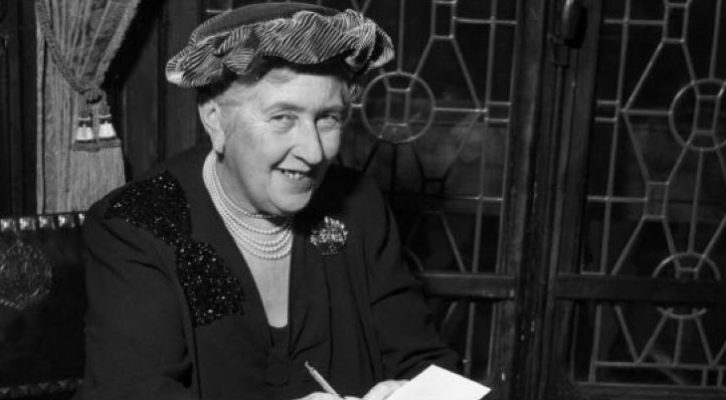
Meet the Real-Life Inspiration Behind “Mr. Toad”
Tom Standage on the Emergence of the Automobile,
and the Headaches That Came With It
Bertha Benz’s road trip in 1888 had been witnessed by bemused onlookers numbering a few dozen at most. Huge crowds turned out to see the grand car races of the 1890s. By the turn of the century, dozens of manufacturers in Europe and America were selling thousands of cars to wealthy enthusiasts, who were starting to make regular use of them on public roads. In 1900 around 6,000 vehicles were produced in Europe (mostly in France) and 4,000 in the United States, bringing the number of vehicles on the roads to around eight thousand on each side of the Atlantic. Public attitudes shifted as the automobile went from being an occasional novelty to an everyday nuisance because of the reckless behavior of many early motorists.
Louis Baudry de Saunier, a French journalist, noted in 1900 that “the automobile makes even the calmest man burn with an inextinguishable thirst for speed.” In 1902 a writer for the Overland Monthly, a California magazine, expressed the hope that “in time the intoxication of the rapid motion of the automobile will wear off, and the pleasure of using such machines will be found in the opportunity that it gives to enjoy fresh air, change of scene and the beauties of nature, with the sense of freedom and independence that cannot be enjoyed in railroad trains.” But this hope was misplaced. “I know kind, well-bred, and considerate people who, as soon as they feel the steering wheel in their hands and the gas pedal under their foot, are seized by an automotive frenzy,” wrote Adolf Schmal, an Austrian writer, in his handbook for motorists, published in 1913. “It seems as if everything we normally call good breeding is suddenly extinguished in them.”
Schmal assumed that motorists would be well-bred because the expense of buying a car meant that early drivers were, by necessity, wealthy members of the social elite. The appearance of cars on the road represented more than just the intrusion of a new kind of vehicle: it was an intrusion by the rich in particular. Early automobiles were loud because silencers (or mufflers) had yet to be made compulsory, and drivers made liberal use of their horns to warn people of their approach.
On country roads, people bemoaned the clouds of dust stirred up by cars, which were far worse than anything horses or wagons could produce. “Motor-car dust is a perennial pest which renders living in suburban and country houses situated on important roads most unhealthy and uncomfortable,” observed an American diplomat stationed in Geneva, in 1905. The French Riviera, one of the first places in the world where motoring for pleasure became fashionable, was particularly badly affected. “I am informed that it has been found impossible of late to either lease or sell certain villas in the French Riviera, and that the paradise of the motorist has become the inferno of the inhabitant,” the diplomat wrote. But he noted that in Geneva, and elsewhere in Switzerland, the local authorities had responded by applying “antidust preparations”—hot coal tar or asphalt—to the roads. Surfacing roads in this way turned out to be effective in reducing the dust kicked up by cars. Some people even paid for the surfacing of the roads in front of their houses. But applying such treatments to all existing roads seemed impractical because it would cost so much. So instead people called for tighter speed limits or for vehicles to be restricted to particular routes.
Noise and dust were not the only problems from the proliferation of automobiles. People and animals were also at risk. Chickens were often caught under the wheels, and some drivers were accused of taking pleasure in running them down deliberately. Attitudes toward chickens highlighted the gulf between poor farmers and wealthy drivers. Le Figaro, a French newspaper, even told the tale in 1913 of the “automotive chicken,” which had supposedly been specially bred by farmers to rush in front of cars, so its owner could then claim five francs in compensation.
Horses were another source of conflict. Motorists disliked being held back by slow-moving horse-drawn vehicles and felt that sentimental, old-fashioned attitudes toward horses were hampering the progress of the automobile in a more general sense, too. It was unfair to blame reckless drivers for endangering other road users, proponents of the automobile argued, when horses caused far more accidents. The danger posed by motoring was overstated, they complained, while accidents involving horses were overlooked as being just part of the natural order of things. “The noble horse, despite all its virtues still stupider than a motorist, remains untouchable, although it has been proven a hundred times that horses and horse-drawn wagons cause more accidents than automobiles,” lamented a German motoring journal in 1904. An Italian magazine took a similar position in 1912: “Horses, trams, trains can collide, smash, kill half the world, and nobody cares,” yet there was an outcry “if an automobile leaves a scratch on an urchin who dances in front of it, or on a drunken carter who is driving without a light.”
The character of Mr. Toad, in Kenneth Grahame’s novel The Wind in the Willows, is the embodiment of the reckless and inconsiderate upper-class motorist.
The character of Mr. Toad, in Kenneth Grahame’s novel The Wind in the Willows, is the embodiment of the reckless and inconsiderate upper-class motorist, a stereotype that would have been widely recognized at the time of the book’s publication in 1908. In the story, Mr. Toad is a crazed follower of the latest fads and has become an obsessive motorist after having his horse-drawn vehicle forced off the road by a passing automobile. “What dust clouds shall spring up before me as I speed on my reckless way!” he declares, on his conversion from horse-drawn to motor vehicles. Before long he has crashed seven cars, been in the hospital three times, and paid a fortune in fines for motoring offenses. His friends try to prevent him from pursuing his dangerous hobby by placing him under house arrest, but he escapes, steals a car, and ends up in prison. He then escapes, steals the same car again, and drives it into a river.
The real-life inspiration for Mr. Toad may well have been William K. Vanderbilt II, an American millionaire and car enthusiast. He caught the motoring bug in 1888, aged ten, when he rode a steam-powered tricycle in the south of France. Ten years later he ordered a motor tricycle—built by the Count de Dion’s company, no less, and powered by an internal combustion engine—and had it shipped to New York. (Around 15,000 of these de Dion tricycles were sold between 1897 and 1901, making it one of the first motor vehicles to be widely distributed.) Vanderbilt acquired a large collection of vehicles, and his Toad-like motoring escapades are said to have led to the imposition of the first speed limits near his home in Newport, Rhode Island, in 1900, and on Long Island, in 1902.
He also antagonized people farther afield during a series of European motor tours. In 1899, during a visit to France, he killed two dogs that were attacking the tires on his vehicle and had to flee from an angry mob. On another occasion he had to fire warning shots to disperse a crowd threatening him with whips and rocks—tellingly, he always carried a revolver with him for protection. His gun was taken from him by an angry mob after he hit a child with his car in Italy in 1906, and the police had to intervene to rescue him. In 1909, Swiss farmers attacked him and threatened to set fire to his vehicle.
“Nothing has spread socialistic feeling in this country more than the use of automobiles.”
Little wonder with people such as Vanderbilt at large on the roads that hostility toward motorists in this period was widespread. A pioneering German female motorist recorded in her diary in 1905, “A journey by automobile through Holland is dangerous, since most of the rural population hates motorists fanatically. We even encountered older men, their faces contorted with anger, who, without any provocation, threw fist-sized stones at us.” Other tactics to discourage motorists in this era included sprinkling nails or broken glass on roads, tying ropes and wires across the lanes, and throwing volleys of fresh dung. Between 1904 and 1906, farmers around Rochester, Minnesota, plowed up the roads to prevent the passage of automobiles; others, near Sacramento, California, dug ditches across roads in 1909 and captured 13 cars.
Handbooks for German motorists from this period recommend carrying a weapon for protection. Some motorists considered it advisable to leave the scene of an accident as soon as possible, for fear of retribution from angry farmers. A law passed in Germany in 1909 even allowed motorists to do this, provided they reported the accident promptly to the police. A German parliamentarian, conversely, advised wagon drivers in 1910 to buy guns to defend themselves from motorists.
In a speech in 1906, Woodrow Wilson, then president of Princeton University, worried that loutish motorists were fanning the flames of resentment toward the rich: “Nothing has spread socialistic feeling in this country more than the use of automobiles. To the countryman they are a picture of arrogance of wealth with all its independence and carelessness.” Car fans, for their part, denounced critics as enemies of progress. “Who are these people who cry for government help against the motorists? They are the same ones who didn’t want gas lighting half a century ago and who petitioned the King of Prussia to stop the railroad being built from Berlin to Potsdam,” noted a German writer in 1906. In 1908 Octave Mirbeau, a French writer, satirized such complaints from motorists: “How frustrating, how thoroughly disheartening it is that these pigheaded, obstructive villagers, whose hens, dogs and sometimes children I mow down, fail to appreciate that I represent Progress and universal happiness. I intend to bring them these benefits in spite of themselves, even if they don’t live to enjoy them!”
There were some attempts to ban cars altogether in the 1890s and early 1900s, though most such efforts were either short-lived or never actually enforced. Parts of Germany and Switzerland banned cars on Sundays to preserve the sanctity of the Sunday stroll. For the most part, however, the advent of the car was met with a growing body of rules regulating its use: speed limits, the registration of vehicles, licensing of drivers, requiring the use of lights at night, and so on. In Britain, for example, the infamous Red Flag law was withdrawn in 1896. In its place came new rules allowing road vehicles weighing less than three tons to drive no faster than 14 mph, with a reminder that they should keep to the left. The Motor Car Act of 1903 updated these rules, introducing vehicle registration and the licensing of drivers (though no test was required), increasing the speed limit from 14 mph to 20 mph, and making reckless driving an offense for which drivers could be imprisoned for up to three months.
The threat of imprisonment was deemed necessary because fines were failing to deter wealthy “road hogs” or “motor scorchers,” as dangerous motorists were starting to become known, from bad behavior. But ultimately it was not laws that would change attitudes toward the automobile, but familiarity. Hostility toward cars and drivers began to diminish as vehicles became more affordable. As car ownership came within reach of more people, in cities and countryside alike, some of the initial objections to the automobile, such as the noise and dust, came to be seen as a price worth paying for the greater freedom, convenience, and affordability it offered compared with horse-drawn vehicles. Perhaps surprisingly, given that Europe had been the birthplace of the technology, this happened in America first, thanks to one car in particular: the Ford Model T.
_______________________________________

Excerpted from A Brief History of Motion by Tom Standage. Reprinted with permission of the publisher, Bloomsbury Publishing. Copyright © 2021 by Tom Standage.
Tom Standage
Tom Standage is digital editor at the Economist and editor-in-chief of its website, Economist.com. He is the author of six history books, including An Edible History of Humanity, the New York Times bestseller A History of the World in Six Glasses and The Victorian Internet. His writing has also appeared in the Daily Telegraph, the New York Times and Wired. He lives in London.



















